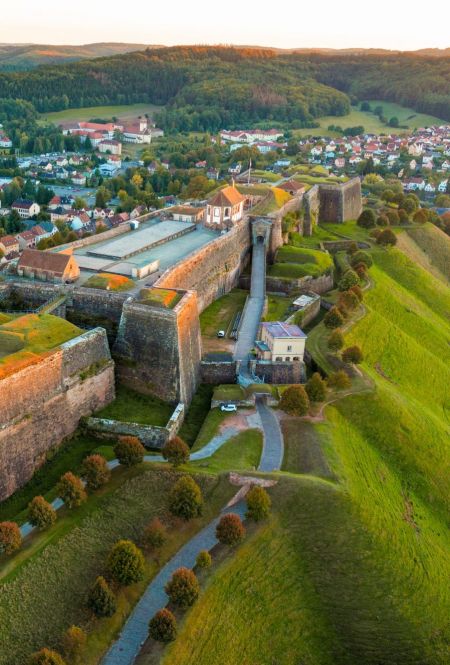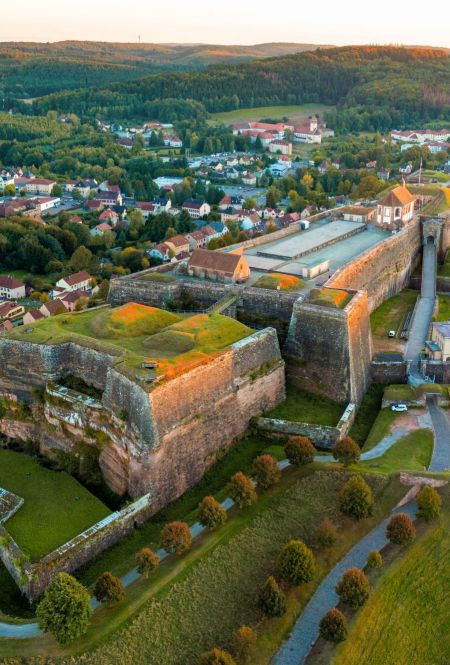
At the borders of Lorraine, nestled in the arms of its monumental citadel, the fortified city of Bitche watches over. Inhabited today by five thousand people, it owes its foundation to the strategic character of the rock which overhangs it and which, since the 12th century, is topped with defensive works. True to his military destiny, Bitche is the heiress of an unusual history, marked by facts that have sometimes lulled her, especially bruised.
The citadel, whose sharp lines soar above the roofs of the city, seems to have sprung from time immemorial, braving the assaults of the elements and oblivion. One can guess the characteristic traces of the genius of Vauban, its designer, although it meets the constraints of its particular geographical location and was rebuilt during the 18th century.
Witness to the great turning points of history, from the French Revolution to the end of the Second World War through the Franco-Prussian War of 1870, the citadel became the guardian of memory. Classified as a historic monument since 1979, it is preserved to remind us that peace has finally imposed itself only at the cost of painful trials and remains fragile.
To allow you to fully inquire about the citadel of Bitche and its history, the places have been arranged and equipped with surprising interpretative routes, deployed between museums, audiovisual resources and interactive equipment. From the top of the ramp, you will enjoy a panoramic view of the city and hills of the Vosges du Nord. On the way down, you can finally relax by crossing the delightful garden for Peace and its ephemeral thematic creations.




